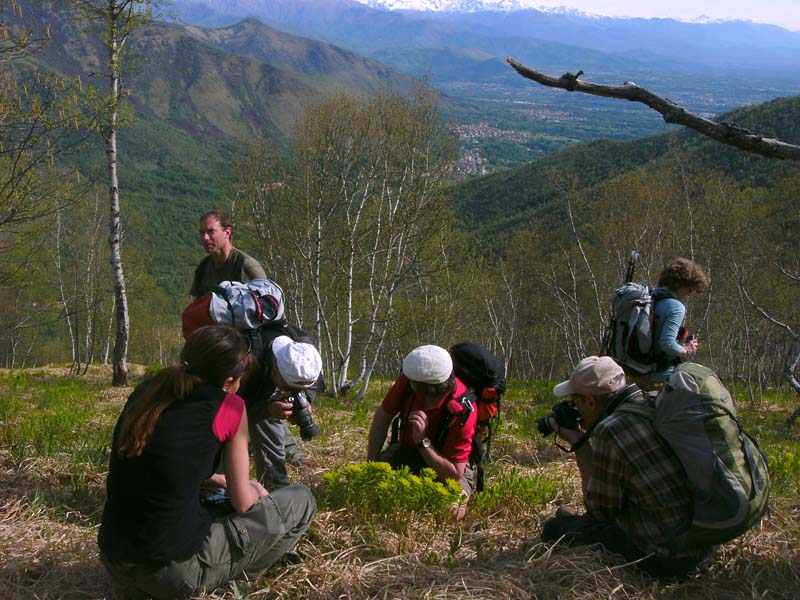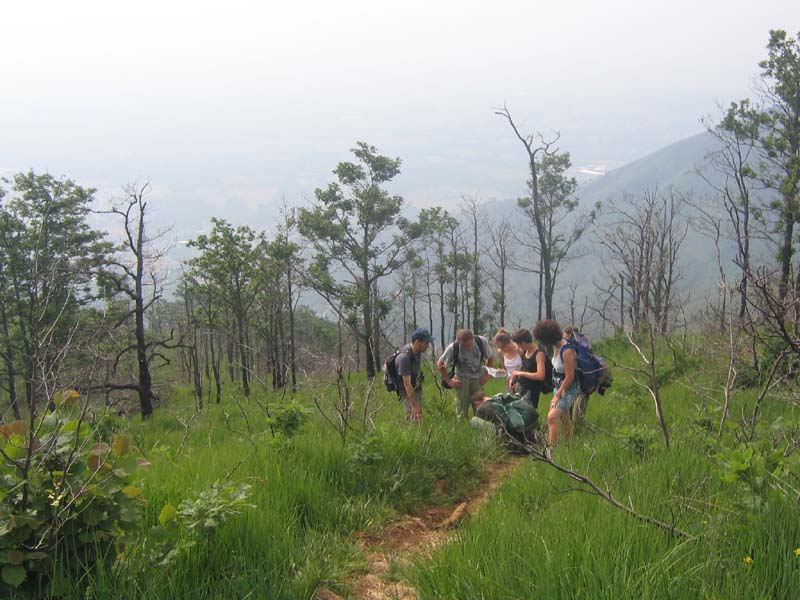Riserva naturale Madonna della Neve sul Monte Lera
www.parchireali.itProtected Area
Identity Card
- Land Surface Area: 48.64 ha
- Regions: Piemonte
- Provinces: Torino
- Municipalities: Givoletto, Varisella
- Establishment Measures: LR 38 09/12/1982
- PA Official List: EUAP0347
- Park Authority: Ente di gestione delle aree protette dei Parchi Reali
Integral Nature Reserve on Mount Lera
The reserve was established in 1982, with the aim to protect and safeguard one of the few known places hosting the Euphorbia gibelliana, a herbaceous species endemic to Piedmont growing in a very small area. The territory extends between the mounts going down south towards the municipality of Givoletto and north in the Varisella large valley. The ridge where the Madonna della Neve (meaning Madonna of the Snow) chapel was erected is situated at an altitude of 1,250 m above sea level. The territory is characterized by a thin vegetation, while rocks prevail. The lithological substratum consists of Iherzoliti belonging to the southern sector of the ultrabasic Lanzo Massif, never affected by glacial erosion in the Quaternary period.
The Gibellian Euphorbia, first described by Paolo Peola in 1892 and dedicated to Giuseppe Gibelli, at that time Director of the Botanical Garden of the University of Turin, is a typical mountain species, as it is never found at altitudes less than 1000 meters. Similar to the Atlantic area Euphorbia hyberna, it is considered by some authors as a subspecies of the latter. It differs for a greater pubescence and for more undulating glands present on the inflorescence.
Pignatti in his "Flora d'Italiay" leads her back to Euphorbia hyberna subsp. Canuti, present in the area of the Maritime Alps.
Bibliographical sources and recent research show that the range of the species extends well beyond the boundaries of the Reserve. In fact, some populations can be found at the Colle della Portia, in the territory of Val della Torre and in the Lanzo Valleys between Punte Calcante and Lunelle, above Pessinetto.
Euphorbia gibelliana is a herbaceous, rhizomatous plant, with a bushy appearance being formed by stems 30-60 cm tall massed in groups of 20-40. The inflorescence consists of an apical umbrella with 5 rays, bearing a single flower surrounded by 5 elongated-elliptic leaves. Like all euphorbiaceae it is rich in a white latex that quickly coagulates in the air. Acidophilous species, it begins its development in April and blooms in May; the fruit ripens in July, while in August the aerial part is completely dried. Pollination of the species takes place by pollinating insects, essentially Diptera and Hymenoptera, while dissemination is probably carried out by ants attracted by the fleshy appendage of the seed.
Being heliophilous, it grows on rocky soils with very little tree cover, while it needs high rainfall and atmospheric humidity for flowering.
The vegetation of the reserve is characterized by mixed forest cenoses, of modest height, with a distinctly mesophilic imprint, with a sparse covering and degrading appearance due to cuts, pasture and fires that occurred in the past. The essences mostly present are downy oak, birch and linden.
In the herbaceous layer there are species of particular botanical importance such as Euphorbia villosa present in Piedmont in a few areas, Cardamine plumieri sporadica in the alpine sectors, Malopospermum peloponnesiacum also very restricted area in our region, Adenophora lilifolia present here in the only known Piedmontese station and Iris aphylla that in Italy is found only in limited environments of the north-western alpine arc.
Since the above mentioned area is under absolute protection, the access is forbidden. The access to the authorized path is only allowed on the 5th August, on the occasion of the Madonna della Neve day. During the other periods some dispensations are given for scientific research purposes, for which the permission of the managing Authority is necessary.









